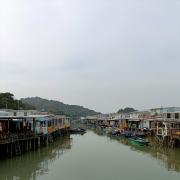
As of the 30th of April 2020, South Korea has no new domestically transmitted cases for the 1st time since the outbreak peaked 2 months ago. Whilst citizens in other countries are just starting to adhere to lockdown and government restrictions, South Korea’s citizens are already coming back out. How have they achieved what some other countries would call a miracle?
South Korea learned the danger of a pandemic way before anyone else. MERS (Middle Eastern Respiratory Syndrome) was a different coronavirus that plagued the Middle East and a few other countries in 2015. When the South Korean government called an end to the outbreak, the country had suffered 38 deaths – the highest outside of the Middle East. However, the country did not stop working and making changes; they were determined not to suffer another outbreak again.
The first thing South Korea changed in their response to the novel coronavirus – CORVID-19 – is that it had thousands of test kits ready to go almost immediately. On the 19th of February there were only 30 cases confirmed in South Korea (incredibly low compared to other countries) but was already working with biotech companies to develop test kits. By the time South Korea had 3,150 cases on the 29th of February (the largest amount of cases outside of China), the country already had thousands of test kits ready to be used.
As well as having test kits in hospitals, private and national healthcare systems teamed up to set up mostly free testing booths; South Korea currently have around 600 testing locations who are testing around 20,000 people per day. This has allowed the country to implement a technique called contact tracing; Because they already had test kits, experts could easily identify the first citizens with CORVID-19 and then trace back their movements to see who they had been in contact with. From this they could then see whether those people had contracted the virus and if they had, who they might have passed it on to. This process keeps repeating until the transmission chain has broken. After MERS, South Korea also changed their laws so that, in an epidemic, a patient’s security footage and data could be logged and recorded before being released to the public. This lets people know whether they have crossed a path of infection and if they have, they can immediately isolate and get tested. ‘Alert’ messages on smart phones inform people that there has been a case near to where they are so they can immediately leave. Websites and private apps also compile the data so citizens can see the risk of traveling to a certain area.
Internationally there has been concern over the privacy of South Korea’s citizens. Although the government has assured people that names, occupations and addresses will never be released, some foreigners still think it is a step too far. However, the public of South Korea has a different mentality, valuing public health over privacy. It is this mentality that is the core of the country’s success in this pandemic. For example, citizens have not needed a lockdown and businesses have mostly remained open because the public has adhered to social distancing advice. The government also has two briefings a day with an hour of question time from the public. Furthermore, there have been no cases of food shortages or panic buying in South Korea. It is a country that works together instead of against each other and this is what has allowed them to remain one of the best functioning countries despite this pandemic.
By Amelie Hogan


























